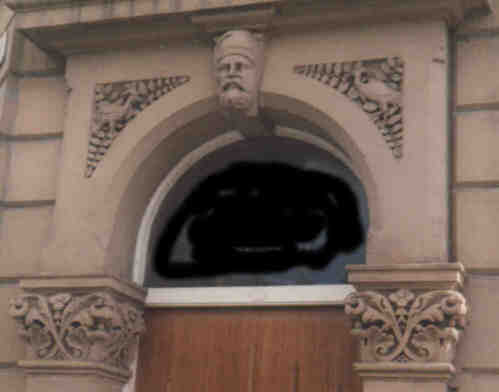 may well have been planned by Thomas himself
for estimates were being sought less than six months after his
death which occurred in March 1869.
may well have been planned by Thomas himself
for estimates were being sought less than six months after his
death which occurred in March 1869.Page revised 21 August 2001
EDWARD LAW
HUDDERSFIELD & DISTRICT HISTORY
THE CHRONICLE OFFICE.
Edward J Law
The Chronicle office is the
attractive building situate halfway along Lord Street,
Huddersfield, which was, until recent years, occupied as a
solicitor's office. It is named from its first tenant, the
Huddersfield Chronicle Newspaper. The premises were built by the
executors of Thomas Firth of Toothill, though the project  may well have been planned by Thomas himself
for estimates were being sought less than six months after his
death which occurred in March 1869.
may well have been planned by Thomas himself
for estimates were being sought less than six months after his
death which occurred in March 1869.
The site adjoins the famous Firth
freehold which the Ramsden Estate had long coveted; their wish
was not to be able to say "we own Huddersfield" but to
have unrestricted power to develop the site as they wished. They
had not been able to tempt Firth to sell the site, no doubt they
offered a price well above the intrinsic value of the site, as
they had done in acquiring another small freehold in the town.
Though Firth was a wealthy man he would, as a very shrewd
businessman, have been happy to realise a good profit; the reason
why he  chose not to was probably one of sentiment
for he had been born there in 1789.
chose not to was probably one of sentiment
for he had been born there in 1789.
Having failed to purchase the site the Ramsdens came to a compromise arrangement with Firth in 1856 when with an exchange of small plots of land and certain promises of priority to Firth they were able to lay out the new Lord Street. Thus it came about that Firth held a lease of the land to the east of Lord Street.
A local man, William Cocking, was appointed architect for the building and had produced plans and obtained tenders for the different aspects of the work by September 1869. The successful mason out of the nine who quoted was James Brook of Commercial Street.
There was only one tender for the
slating, from Goodwin & Sons slate merchants of Huddersfield,
a family who are commemorated in the town's cemetery by an
unusual group of attractive slate 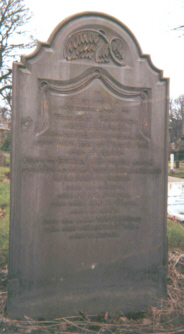 headstones.
headstones.
The carving which is a feature of
the building, and of Cocking's work, is by Emanuel Morton of
Greenhead Lane and was undertaken at a contract price of £130.
Morton had exhibited at Wakefield Industrial & Fine Arts 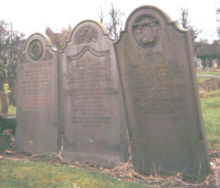 Exhibition
in 1865 gaining first class medals for two of his sculptures. The
main features of the carved decoration are the masks on the
window arch keystones but the angles of the door arches are also
worked and include a delightful early bird getting its worm.
Exhibition
in 1865 gaining first class medals for two of his sculptures. The
main features of the carved decoration are the masks on the
window arch keystones but the angles of the door arches are also
worked and include a delightful early bird getting its worm.
The total of the lowest tenders was
just in excess of £5,400 though not all the lowest were
successful, 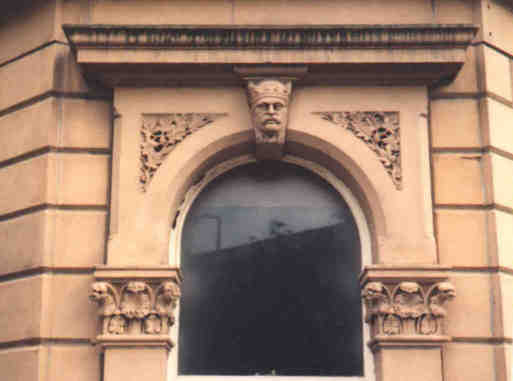 there had been a tender of £112 for the
carving, and no doubt additions would be made for extras during
the course of the building. A 'raising supper' for 100 held at
the Wharf Inn in July 1870 cost two shillings per head and marked
the completion of the building. On 1st October the Chronicle was
able to announce its "removal on 15th inst." to Lord
Street to premises specially erected for newspaper and general
printing purposes.
there had been a tender of £112 for the
carving, and no doubt additions would be made for extras during
the course of the building. A 'raising supper' for 100 held at
the Wharf Inn in July 1870 cost two shillings per head and marked
the completion of the building. On 1st October the Chronicle was
able to announce its "removal on 15th inst." to Lord
Street to premises specially erected for newspaper and general
printing purposes.
Their bill-heads of the period carry an engraving of the building very much as we see it today, except that the sign 'Chronicle Office' extending over half the length of the roof has long since disappeared.
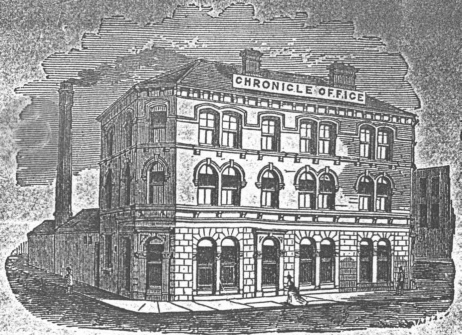
Return to HOME.